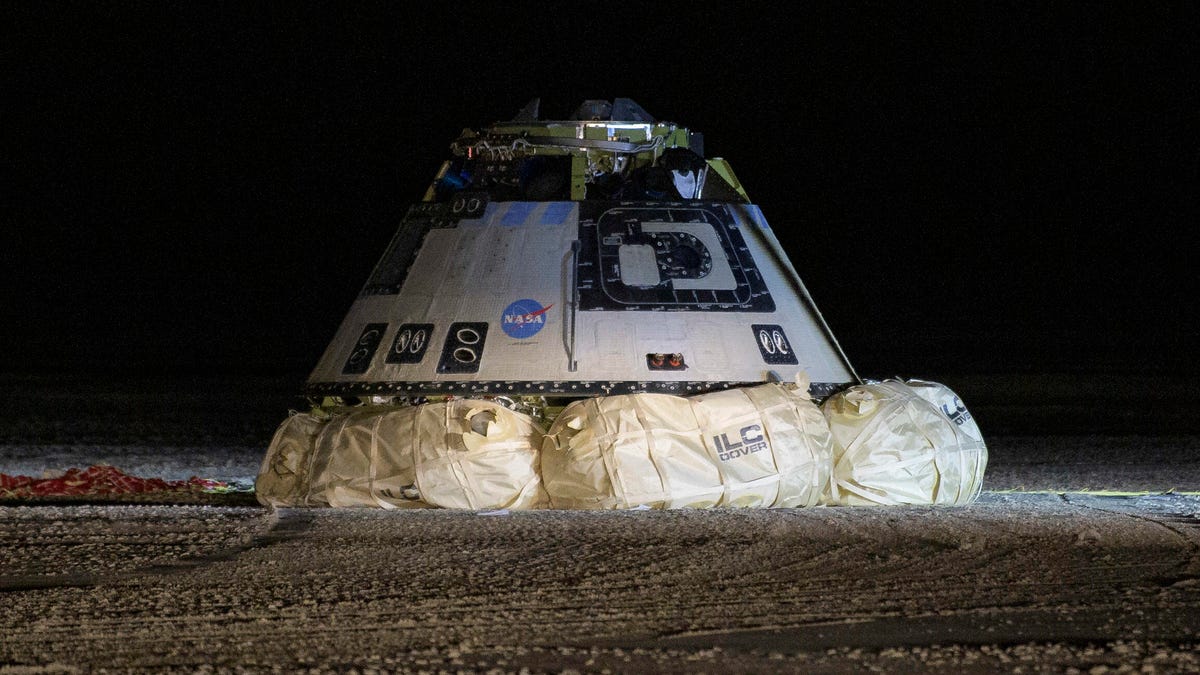Boeing Starliner lands safely in the desert after failing to reach the ISS
The Orbital Flight Test didn't go quite as NASA hoped but Boeing's Starliner made it back to Earth safely.

The CST-100 Starliner lands back on US soil, airbags full.
The Boeing Starliner, one of two new spacecraft to take astronauts from US soil to the International Space Station (ISS), has returned to Earth safely after its somewhat shaky first Orbital Flight Test. The capsule blasted off atop a United Launch Alliance Atlas V rocket without any drama, but soon after a timing glitch prevented the spacecraft from reaching its planned orbit, denying a rendezvous with the ISS. On Sunday, Starliner returned to Earth, deploying parachutes and airbags to land safely in New Mexico.
"You look at the landing, it was an absolute bulls-eye," said Jim Bridenstine, NASA administrator, in a press conference Sunday. The capsule landed in the desert just before 5 a.m. PT, its trio of parachutes carrying it safely to the earth. It was the first time a capsule was safely brought back to US soil in history.
However, while the landing was on target, Starliner's journey in space was a different story.
The uncrewed flight test was scheduled to dock with the ISS on Dec. 21 and be sent back to Earth on Dec. 28. A timing error prevented this maneuver and so Boeing decided to amend Starliner's schedule and bring it back to home soil early. NASA celebrated the mission as something of a success with Boeing ticking off a number of mission objectives.
"This mission has only strengthened the resolve of the NASA, ULA, and Boeing teams," said Jim Morhard, NASA deputy administrator. "The hardest parts of this mission were a tremendous success."
Whether Starliner can perform perhaps the most difficult process -- physically docking with the ISS 400 kilometers (250 miles) above the Earth as it travels at 7.66 kilometers per second -- is still to be determined. According to NASA, the craft will now undergo refurbishment with Boeing readying it to take astronauts to the space station in the first crewed flight test.
Bridenstine suggested in a pre-flight briefing both SpaceX and Boeing would be flying crewed missions within the next couple of months, using the Crew Dragon and Starliner, respectively, to take astronauts to the space station. Whether Starliner's orbital troubles will push back Boeing's plans is currently unknown and it's not clear whether NASA will request another orbital test flight to demonstrate successful docking.
Where to next? Well, as SpaceX CEO Elon Musk tweeted Friday, "orbit is hard." Though Boeing and NASA officials seem pleased with the mission objectives ticked off during this flight, the risk of taking people to space in a capsule, completely untried in its docking procedure, will loom over Starliner's next flight.

